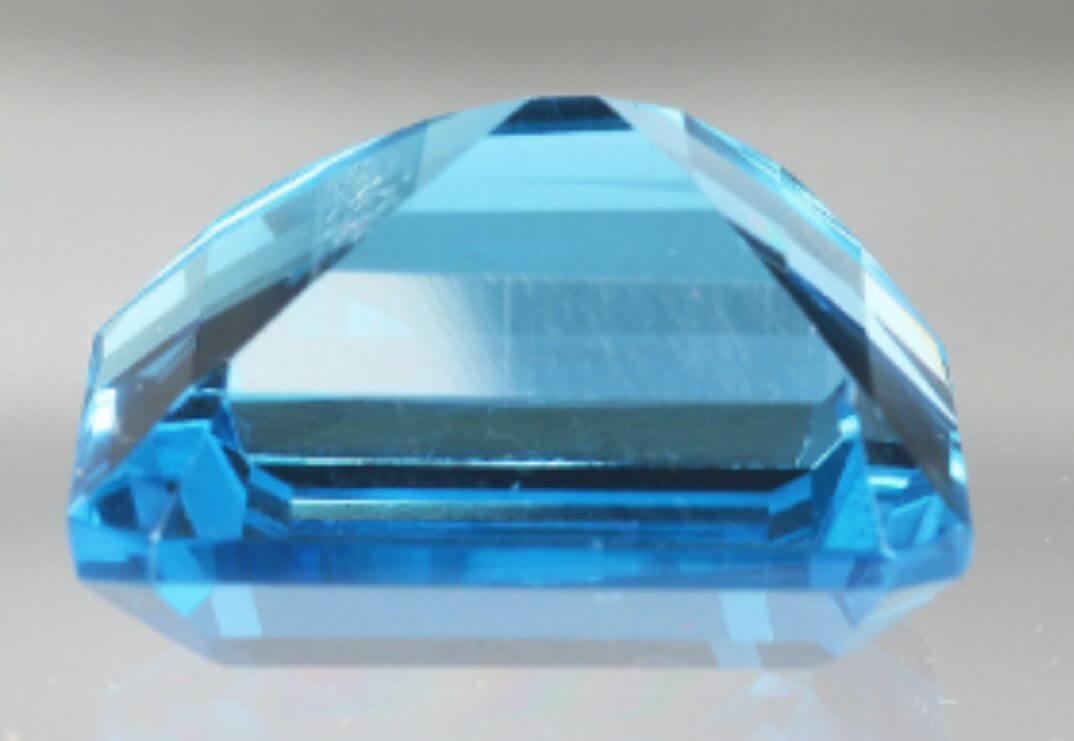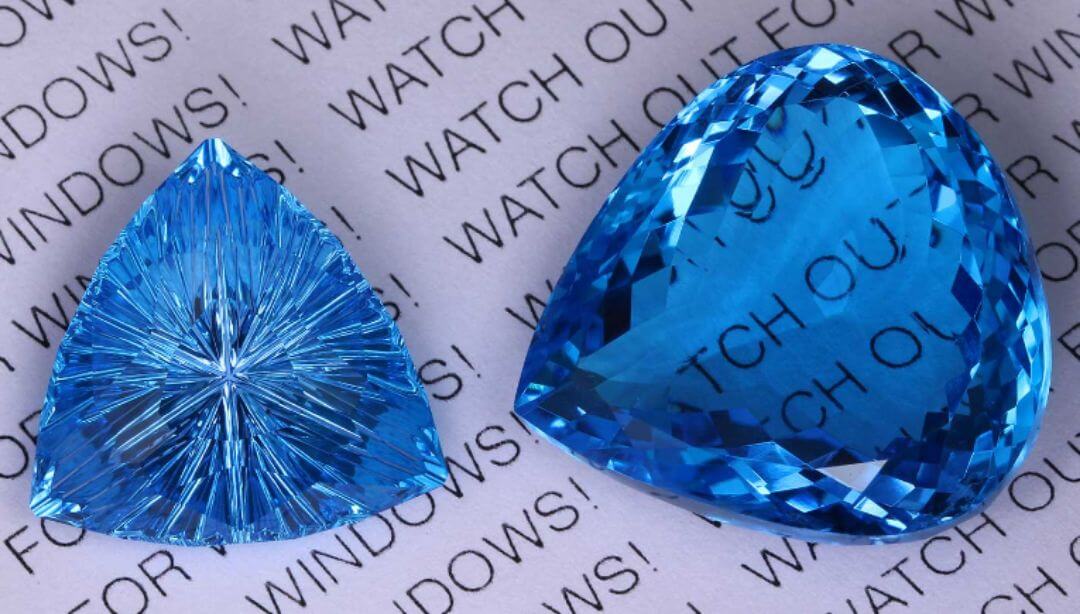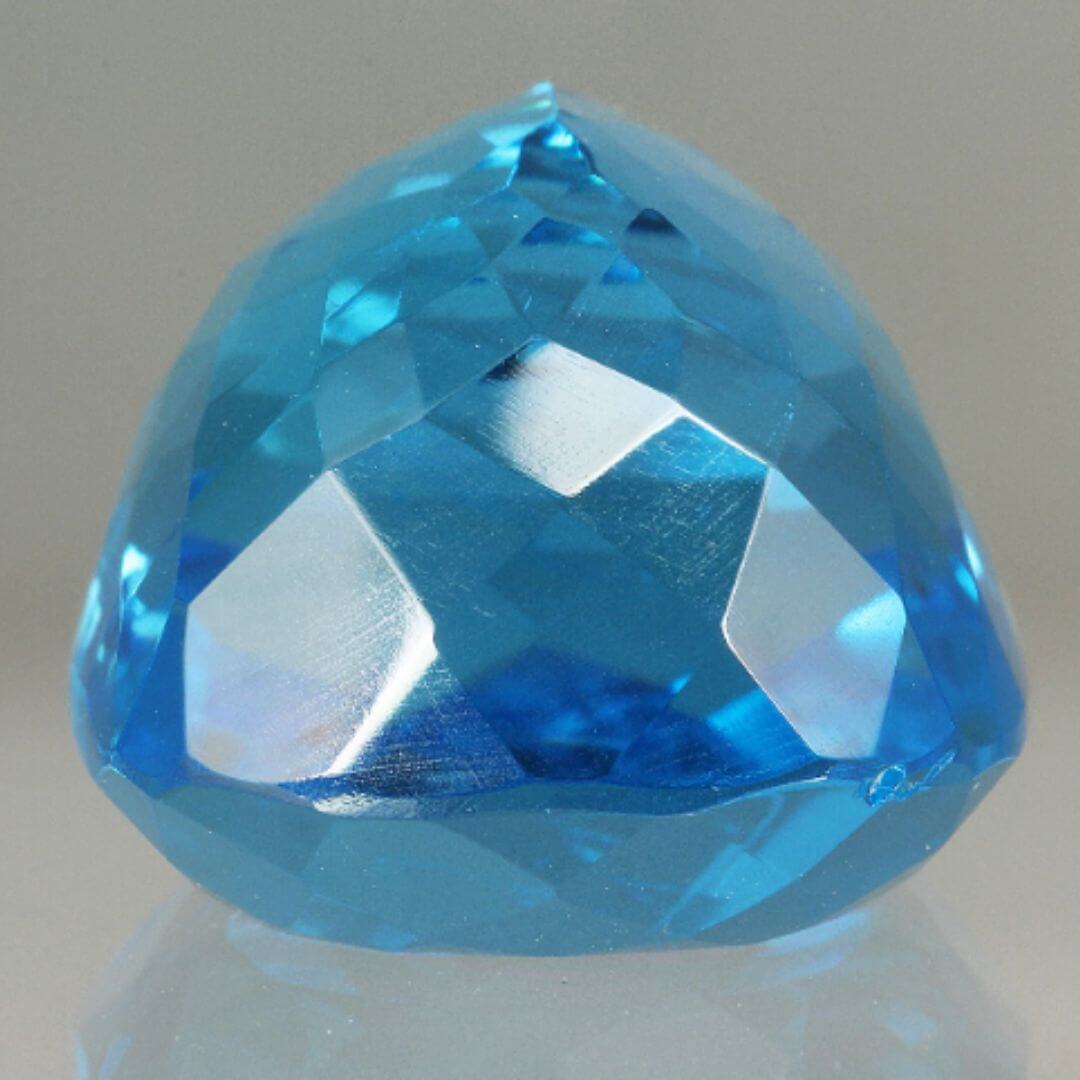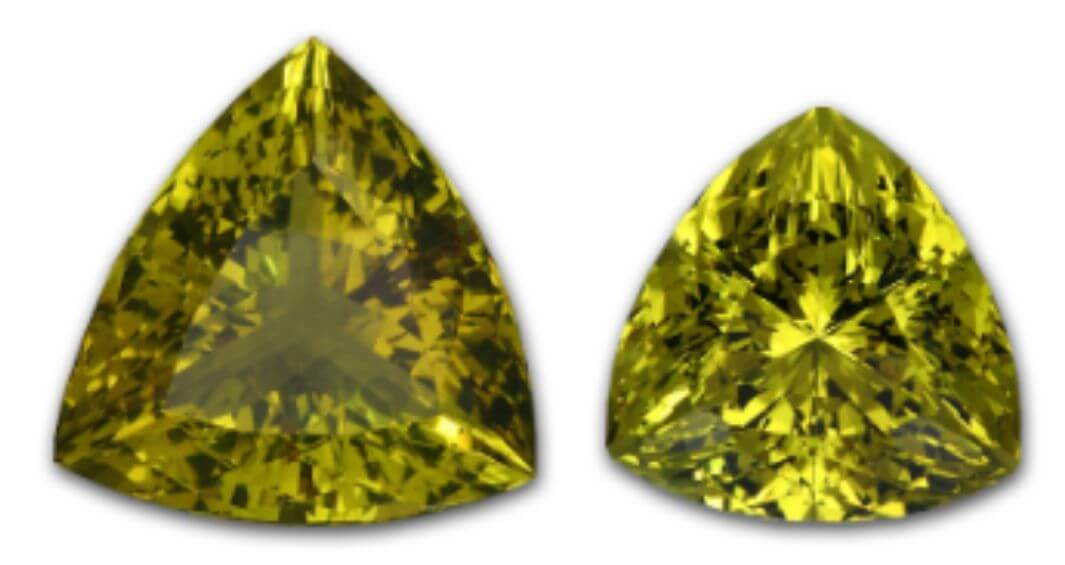Before I began cutting my own gemstones, I purchased a beautiful green diopside emerald cut that I absolutely loved—until I noticed one of the corners was cut larger than the others. That slight asymmetry made the gem incredibly difficult to set. The prong over that corner had to be bent inward more than the others, and the finished setting just never looked right. That experience stuck with me, and it’s one of many reasons I became passionate not only about beautiful gemstone cutting—but also about practical cutting.
Whether you're a jeweler, collector, or just someone who loves gems, it helps to know what separates a well-cut stone from one that might look nice at first glance but becomes a headache later on. Below are some of the most common cutting issues I’ve encountered—and how to spot (or avoid) them.
Use a Loupe—and Use It Right
A 10x loupe is your best friend. With some practice, it’ll help you spot flaws, asymmetry, polish issues, and inclusions that aren’t visible to the naked eye. Relying solely on eyesight—while faster—often leads to missed details that can matter a great deal later on.
Crooked Cuts and Bad Symmetry
One of the most common issues is asymmetry—especially with shapes like trillions, which are often cut with more primitive techniques. Always look at the gem face-up to see if the shape is even. Then, check the sides. Is the culet centered? Is the table level with the girdle? Look straight through the table to confirm alignment. A crooked pavilion or off-center keel can make a stone very hard to set properly.
 Avoid "Windowing”
Avoid "Windowing”
If a gem is cut too shallow or at improper angles, it creates a "window"—a see-through dead spot in the center where light leaks out the bottom. You want brilliance, not a lifesaver look with a ring of color and nothing in the middle. Tilt the gem as you view it—if it loses brilliance too easily, that’s tilt windowing, and it's a problem. (The gem on the right has a large window.)
Don’t Skip Corner Facets
Pointy corners on trillions, squares, and other angular shapes should have tiny facets added for protection. They don’t ruin the look—they make the gem far easier (and safer) to set. This is even more important for fragile stones like tanzanite.
Steep Ends and Knife-Edge Girdles
Gem sides or ends that slope at extreme angles are hard to grip with prongs or bezels. Emerald cuts and tourmaline are particularly guilty of this, although other gems can have it too. I try to keep my pavilion angles at a maximum of 70° whenever possible to keep the gem settable.
Knife-edge girdles—sharp ridges where the gem is held by metal—are another hazard. They're prone to chipping during setting, especially in delicate gems. A slightly rounded or faceted girdle is far safer and looks better, too.
Girdles Matter
Some gems have girdles that "wander," sloping up and down rather than staying level around the stone. This makes cutting a matching seat in the setting a challenge and increases the chance of breakage unless it’s an intentional design feature (which I sometimes use—but rarely, and when I do, it’s obvious), the girdle should be even and straight.
Polish Isn’t Optional
Good polish equals good brilliance. Poor polish—often caused by rushing or using coarse grit—leaves tiny scratches that rob a gem of sparkle and color, even if you can’t see the scratches with the naked eye. I once recut a gem (below) that looked dull and lifeless; just a clean polish transformed it into something vibrant.
Chips, Inclusions and Over-Dark Stones
Gems are sometimes chipped in handling or transport—often at the culet or girdle. These should be examined closely before purchase.
Also, check for inclusions near the edges that might cause problems when setting. And be wary of over-dark stones. Lighting at shows can conceal the fact that a gem may go dead in everyday conditions. A slightly lighter stone will usually sparkle more and look better in a variety of settings.
In Summary
A beautiful gem isn’t just about color or shape—it’s about the details. Symmetry, angles, girdle quality, polish, and practicality all play a role. I’ve spent years refining my cutting techniques to honor both the aesthetics and the realities of how gems are used in jewelry. Whether you’re setting, selling, or simply admiring a stone, knowing what to look for helps ensure you're getting lasting beauty—not something that will disappoint you later. (Note, we do not offer cutting services for other people’s gems; we only cut our materials and then offer them for sale as finished and beautifully cut gems.)
Visit John Dyer and Company's profile page on Xpo Press to learn more, including additional photos, contact information, and upcoming shows, or visit his website at www.JohnDyerGems.com




